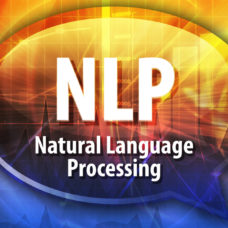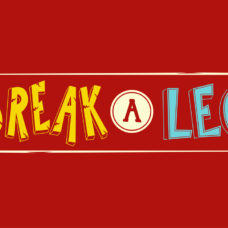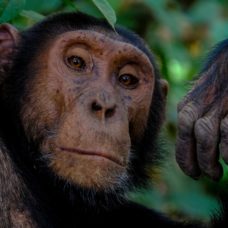Main Theories of Language Development Takeaways:
- Language development is a slow process that starts during early childhood.
- The most significant human invention is arguably language.
- The nativist linguistic theory postulates that every human being is born with innate language ability
- BF Skinner suggested that learning a language is like learning any new skill.
- Although there are several language development theories, they mostly focus on nature vs. nurture.
Any language boils down to a set of symbols representing sounds and grammar governing the system. But contrary to what you might believe, you don’t need to know grammar by heart to learn a language.
Grammar is the conventionalization system of a language, often wrongly distilled into a single word, “rules.” The word “rules” suggests a language should have a set of rules first, then people can speak it.
However, languages do not work this way. As a matter of fact, it’s the other way around. People collectively create the language, then come to the rules that describe it and conventionalize it.
Language is like a living creature. It grows, evolves, and changes over time. Grammar rules simply reflect the usage of language at a particular time.
Maybe no other person has manipulated the English language like William Shakespeare. But reading the Bard of Avon’s plays, you can come across many gross grammatical errors that average people don’t make.
Giving Shakespeare a break, there was no such thing as grammar back then in the way we think of it today. If you go back to the 16th century, you could hardly make sense of the English you hear.
Indeed, by learning grammar, you can develop an understanding of a language. But grammar can’t explain language development as a cognitive, social, and cultural phenomenon.
What is Language Development?
Language development is a slow process that starts during early childhood, allowing children to grasp the spoken word and communicate.
The emergence of language in human children comes after a period of significant development of the brain. This term also applies to the origin of languages and why humans developed language as a communication tool in the first place.
Language development is a vast field with contributions from various disciplines. These include linguists, anthropologists, archaeologists, geneticists, neurologists, and computer scientists, to name a few.
The most significant human invention is arguably language.
Today, the world is bustling with thousands of spoken languages. There are 7,111 to be exact and this number is constantly changing.
With less than living 1,000 speakers, 40% of languages (2,895) are considered “endangered”.
Thanks to language development, we can convey deep meanings. We can communicate complex ideas that help us construct the world around us.
Without language, civilization might not exist. There may not be science or art. Or, we may never have technologies or the Internet or Google!
Language Acquisition in Children
Usually, it’s an exciting event for parents when their child utters her or his first words.
Although we can’t know for sure when exactly the baby’s babbling turns into words with meaning. Soon, the baby turns into a chatterbox, starting to make sense of sounds and picking up new words used haphazardly.
Then, syllable by syllable and word by word, a substantial vocabulary accumulates, and a functioning language is readily accessible. It is also possible to master a second language and a third.
There might be no roof for the human brain in this regard.
Speaking of which, there is a lot of work to do regarding the understanding of the systematic mechanism of language development in the brain. That’s because we don’t know a lot about how the brain works in the first place.
But, what scientists do know is that a system of brain regions work together when acquiring and using language.
The angular gyrus, Wernicke’s area, the insular cortex, the basal ganglia, and the cerebellum are all involved in the language acquisition process. But it doesn’t stop here.
To read a word, you have to see it first, through the optic nerve and the visual cortex. When reading in Braille, for example, it’s the sensory cortex that gets involved. You can’t listen to someone speaking without the auditory cortex.
Most of us take the ability to acquire and utilize a language for granted. Yet, language is actually quite an amazing human faculty. It takes a good deal of neuronal and muscular activity to articulate or write a single word.
Read More: What is the Shortest English Word?
Five Theories of Language Development
There’s no right place to start from when discussing the theories of language development. Many schools of thought have developed and influenced the history of language acquisition as an academic discipline.
Let’s get into five main theories and approaches that give us insights into the language phenomenon.
1. Daniel Everett’s Theory: Language Scratches the Communicative Itch
Picking up and using a language is something, inventing it from scratch is a whole another thing. Here come the homo Erectus!
The language phenomenon may not have started with us, homo sapiens.
According to linguist Daniel Everett, nearly two million years have passed since “homo Erectus” first started uttering meaningful sounds.
Homo erectus is considered the first human species, which also includes homo sapiens and Neanderthals.
These early hominins had big brains, walked upright, and were the first gatherer-hunters. They traveled in groups across the islands, and the ocean couldn’t get in their way.
The Erectus needed language because they had to communicate more complex ideas than just pointing to a mammoth to alert the hunting party.
“You need communication with symbols, not just grunts,” says Everett. “They accomplished too much for this to simply be the sort of communication that we see in other species without symbols.”
Settlement evidence found on the island of Flores, in Indonesia, suggests that the Erectus came together in groups — on rafts.
They crossed strong currents surrounding the island. For that, they had to paddle together and know when to stop. Homo erectus needed “words” to give commands and instructions.
Homo erectus had a vocal apparatus similar to gorillas, so they couldn’t make all the sounds we can make. Their linguistic capabilities were just enough to make them one of the most successful species to ever walked the Earth.
They roamed the face of the planet for over 2 million years. For as many as 350,000 years, we haven’t lived but about a sixth of the time.
2. Chomsky’s Nativist Linguistic Theory: Universal Grammar
Evertt’s work suggests that a language is a social tool that humans developed to communicate and share knowledge to solve problems. Linguist Noam Chomsky, however, thinks language is innate.
What is grammar?
It is “The whole system and structure of a language or of languages in general, usually taken as consisting of syntax and morphology (including inflections) and sometimes also phonology and semantics.”
For Chomsky, who formulated the concept of universal grammar, language has a genetic component to it.
The nativist linguistic theory postulates that every human being is born with innate language ability. Pioneered by Chomsky, this theory suggests that a human baby’s brain comes to the world pre-equipped with language-learning systems.
Chomsky thinks there could be a single master language that served as the origin of all other languages.
A child comes to the world with the prerequisites for language learning. Namely, a built-in tool Chomsky calls the Language Acquisition Device (LAD).
This brain device allows the child to acquire linguistic abilities rapidly. Worth noting, Chomsky’s LAD is a hypothetical concept. There’s no brain region recognized as such by neuroscientists.
3. B.F. Skinner Behaviorist Theory
The innatist, or nativist theory, attributes the emergence of language as a neural mutation that occurred way back in a single individual. Everett thinks it was born from a more social necessity, slowly shaped by many individuals.
This means there’s no universal grammar shared between all languages and from which they take their linguistic cues. The notion of universal grammar and the innateness of the language faculty is also opposed to the behaviorist concept of language.
It’s American behaviorist and psychologist B.F. Skinner who developed the behaviorist theory of language acquisition.
This theory suggests that learning a language is much like learning any new skill through observation, imitation, repetition, errors, rewards, and punishments. Or what Skinner calls Operant Conditioning.
Behavior theorists posit that language development is a learned behavior. When babies first speak, they are trying to imitate the behavior of their parents and adults around them.
A language would develop as responses to stimuli from the environment. Hugging the baby for his or her first word is a reward that pushes them further on the learning curve.
Kids in school could get either rewarded or punished for their language learning acquisition process.
However, Chomsky isn’t a fan of the behaviorist theory because he claims it doesn’t address syntactic acquisition.
4. Vygotsky’s Social Interactionist Theory
The social interactionist theory is based on the work of Soviet psychologist Lev Vygotsky.
The basic notion of this theory is that language has a social origin. In that regard, it has some similarities with Everett’s model.
This concept suggests that the child, from birth, is continually engaging in social interactions, which allows him to develop higher cognitive functions, namely language, and thought.
According to Vygotsky’s social development model, socio-cultural interactions come first, then cognition and language development.
5. Piaget’s Constructivist Theory
For Jean Piaget, a Swiss psychologist, language is not only due to genetic predisposition or imitation
Piaget’s constructivist theory argues that language is constructed by following cognitive development. In other words, people develop their language skills and construct overall knowledge based on their own experience.
Beyond just language development, Piaget’s theory focuses on understanding the nature of intelligence itself. He defines four stages that cognitive development goes through:
- Sensorimotor stage: birth to 2 years
- Preoperational stage: 2 to 7 years
- Concrete operational stage: 7 to 11 years
- Formal operational stage: 12 and up
We have barely scratched the surface here. There are several other theories, each with its unique approach. Like languages themselves, thoughts on them may overlap and cross-fertilize.
What is the Maturation Theory of Language Development?
An American pediatrician, Dr. Arnold Gesell, introduced the Maturation Theory of Child Development in 1925. His theory focuses on how genetics influences development and other behavior.
Gesell believed that human skills — adaptive, motor, and language — develop and unfold naturally based on our biological makeup.
Be that as it may, he didn’t disregard environmental factors’ influences on a child’s development. However, the clinical psychologist was convinced that they were less influential than genetics.
So, Gesell focused his investigation on children’s physiological development — which he called maturation.
According to the pediatrician, the rate at which children develop depends primarily on their nervous system’s growth. And that includes the brain, spinal cord, and a complicated web of nerve fibers.
Gesell’s language acquisition theories about maturation propose that language development milestones occur between ages 40 weeks and five years.
- 0-50 weeks: A child produces meaningful sounds.
- 1 – 2 old: The child uses longer phrases and straightforward sentences.
- 2 – 3 old: The child begins to communicate in complete sentences.
- 3 – 4 old: The child uses language as a tool to expand their knowledge of the world.
- 4 – 5 old: The child has a basic mastery of the language.
Gesell also pointed out that children under the age of 10 are emotionally predisposed to learn a second or third language. And that’s because they still perceive language as fun at that stage of development.
How are the Theories of Language Development Similar and Different?
The psychological theories of language development have one thing in common. And that’s the focus on how genetics and the environment may have influenced language development. Indeed, researchers believe that language acquisition is partly inborn and partially learned through interaction. However, each language development theory places a varying degree of importance on nature and nurture.
For example, BF Skinner’s behaviorist theory focuses on how the environment influences language acquisition. Similarly, Vygotsky’s social interactionist theory highlights the impact of nurture on language development.
Daniel Everett’s theory, on the other hand, explores the genetic disposition of language development.
With that said, most theories of language development believe that language acquisition is a blend of nature and nurture.


















Thanks for sharing a very useful summary of the most important language learning theories!